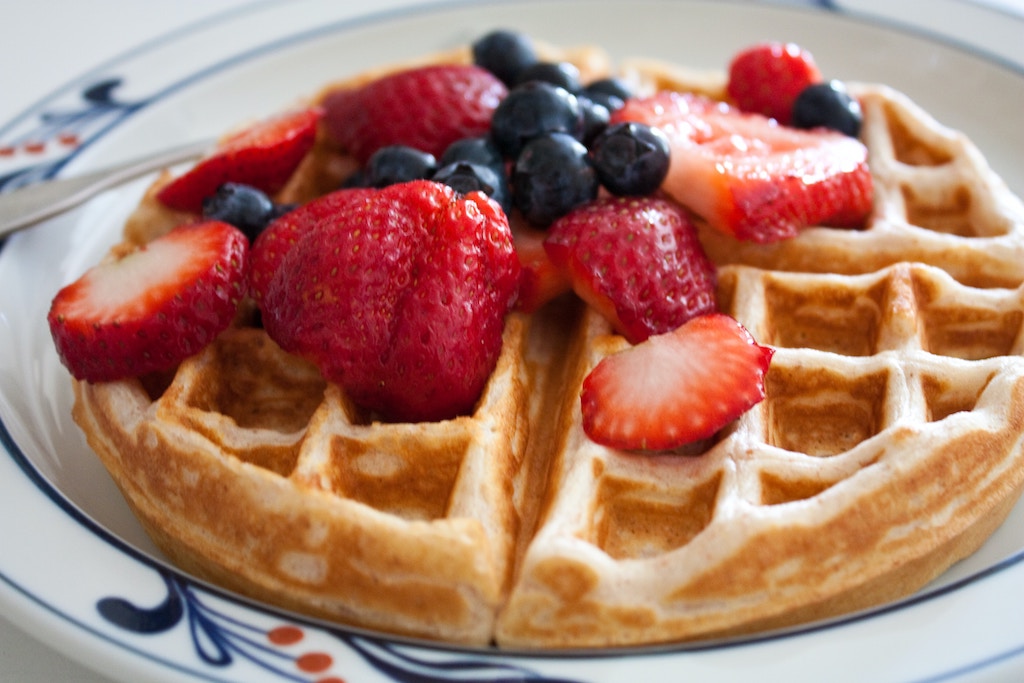Waffles are a ubiquitous treat, gracing the menus of nearly every diner and brunch spot in North America. But don’t let their popularity fool you. There’s more to waffles than meets the eye.
Many take for granted the rich history and diversity of waffles. They arrived on North American shores via German, Belgian and Dutch immigrants who wanted to share their delicious culinary tradition in a new land. But over time, those recipes got simpler – and, frankly, worse. After the industrial food boom in North America in the early 19th century, waffles became synonymous with those sad, colourless and perfectly round frozen waffles that you pop in the toaster for an effortless breakfast.
Thankfully, we’re starting to see a rebirth in artisan waffles (a trend that never disappeared in Europe). Pioneering restaurants like Demetres, dedicated to making the tastiest ice cream and desserts the old-fashioned way, are leading this renaissance. In this post, let’s explore what waffles are, what styles exist, and how to spot the difference between a subpar and an excellent one.
Waffles 101
The word “waffle” traces its origins to an old West Germanic word meaning “honeycomb,” a testament to the confection’s dimpled appearance. If you squint, you can definitely make out a honeycomb structure in waffles.
While early waffle presses featured elaborate designs like the fleur-de-lis or ornate crosses, modern irons (adapted from Medieval Belgian waffle irons) opt for a simple square cellular structure. The batter used is leavened, often featuring eggs and sugar.
Different Waffle Styles and How to Spot a Quality Waffle
As mentioned, don’t let those freezer aisle waffles fool you – waffles come in all shapes, sizes, flavours and preparations. From North America to Belgium, Hong Kong to Indonesia, waffles are a beloved treat that each culture adapts to its tastes and local products. Here are a few waffle styles to know:
The Liège Waffle: The gold standard of waffles, this dense, slightly toothsome dessert is the brawnier cousin of the Brussels waffle (see below), hailing from the Belgian city of Liège. It picks up complexity from its brioche-like batter and caramelized sugar, both of which undergo an intense Maillard reaction to create toasty, nutty notes.
The Brussels Waffle: This is what North Americans know as the “Belgian Waffle.” It’s lighter, blonder and fluffier than the Liege waffle but no less satisfying. Next to a scoop of decadent ice cream, the Brussels waffle is pure heaven.
The Scandinavian Waffle: Waffles are hugely popular in Sweden, Denmark and Norway. Here, you’ll find a thinner, crispier waffle with a blonde appearance and relatively straightforward flavour profile.
The Toaster Waffle: Need we say more? They’re the treacly-sweet discs of perforated dough you find at virtually every grocery store. They’re good for what they are, but they don’t hold a candle to the real McCoy.
The Croffle: A modern invention, the croffle is a waffle made with croissant dough. It’s flaky, buttery and perfect alongside a morning cappuccino.
If you’re looking for a quality waffle, look for restaurants or stalls that prepare things the old-fashioned way. If they use whole ingredients and a sturdy waffle press, you’ll probably get something worth your time. And if they advertise the type of waffle they serve (i.e., Liège or Belgian), you know they’ve done their homework and honed their craft. Again, dessert restaurants like Demetres are the gold standard for North American waffles, so check out their website for visual examples of what a good waffle looks like. And if you witness your waffle maker pry a rock-hard disk from the freezer, run in the opposite direction!
Image Credit: Unsplash

